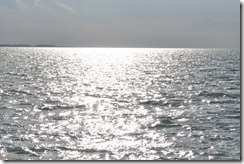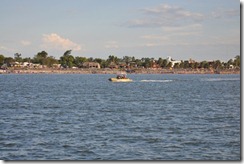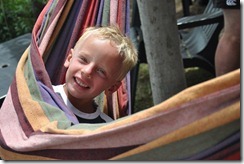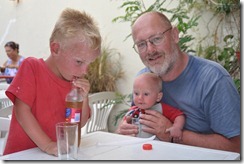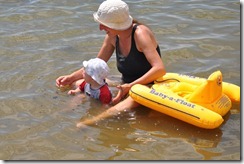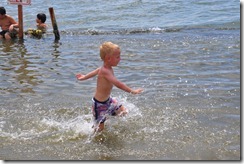Since the global media has deigned to run an Argentina story not linked to football or those islands, I should briefly say we weren’t in the train or anywhere near it, although Estacion Once was my mainline station for the two years that I lived in Buenos Aires. But spare a prayer for those who were, and their families and friends. I suspect the key word will turn out to be underinvestment; by all accounts there has been very little since the railways were renationalised by Peron in the middle of the last century, and a generation of reprivatisation hasn’t made any noticeable difference as the private companies largely make their money from government subsidies. And of course the stuffed shirts holding the purse strings would be the last to squash themselves into the sweaty cattle-trucks that pass for urban passenger trains.
On a more cheerful note, gifted with two bank holidays next to each other, and sick of the sight of textbooks, we piled ourselves and a tent into the car and disappeared off to Miramar for the long weekend.
Miramar is Argentina’s answer to Clacton; a once-glorious-now-faded-but-lately-rediscovering-itself beach resort. It is located on the shores of the Mar Chiquita, one of the world’s largest salt lakes, which at 80 kms across might be the sea apart from the water temperature (tepid) and the lack of waves. It also has such a ridiculously high salt concentration that it is almost impossible to swim; my feet kept floating to the surface(!) The first hotels appeared in the early 1900’s, when the nearest public transport was to Balneario some 12 kms away; the early hotels used to lay on transport along the then mud-road to Balneario bus station. In its heyday Miramar had over a hundred hotels catering for every taste and budget, until economic hardship combined with two major floods decimated the town and the tourist industry. For some forty years, the remnant of the unflooded buildings and their occupants have lain dormant. I have no idea how people have made their living, but only a couple of years ago we went to visit on a bank holiday and discovered every business in the place well and truly shut, and throngs of potential tourists milling the closed high-street and wondering what they were going to do about lunch.
Thankfully some enlightened soul (change of local government? Enterprising business person?) appears to have realised that the exponential rise in internal tourism in Argentina is there for the taking, and the town came together to organise themselves a crowd-pulling carnival weekend. Although with our two in tow we didn’t sample much of the night-life, we did enjoy sampling the waterfront eateries and the buzzing atmosphere of people enjoying themselves.
The kids did what kids the world over do at the seaside; the four year old practises principles of civil engineering with a bucket and spade, while the nine-month-old eats the sand. All good developmental stuff. We also at Joni’s behest went out on a boat-tour of the lake, ostensibly to see the flamingos, although we’ve seen flamingos at much closer quarters by driving a few kilometres up the shoreline, but the boat was fun and a pleasant angle from which to experience both the lake and Miramar.
The campsite was great, facilities not quite up to the number of people occupying them, but service was friendly, and hopefully some of the profits from this year might find themselves invested for next season and beyond. Our newly replaced tent is smaller, lighter, a sensible design (species of dome), will pitch in ten minutes next time, and more importantly doesn’t collapse when it rains (having well and truly had its first baptism on Monday night). Many hoorahs. And so as Clacton and its East Anglian neighbours were to my childhood, to Miramar we shall surely return.
